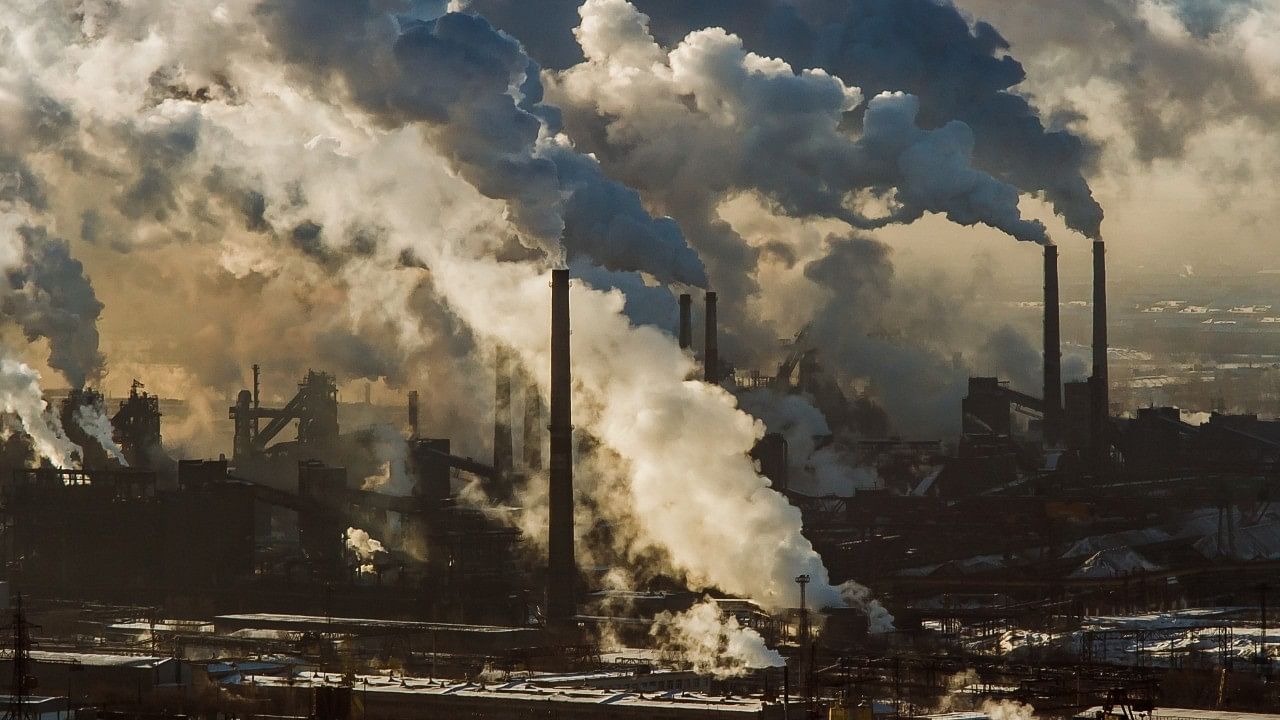
Industrial cluster. Representative image.
Credit: iStock photo
Chennai: Researchers with the Indian Institute of Technology-Madras (IIT-M) have identified the Indian Ocean and Bay of Bengal as potential storage sinks for storing large amounts of carbon dioxide (CO2), which could help make industrial clusters carbon neutral.
Called ‘CO2 sequestration,’ the process envisages the ocean acting like a storage reservoir for greenhouse gas with researchers finding that CO2 can be stored permanently in the ocean in the form of solid hydrate beyond 500 m of sea depth through the liquid CO2, thereby can be helpful to make our industrial clusters carbon neutral.
Besides helping devise large-scale CO2 storage and utilizing the fullest potential of oceans to decarbonize the world without harming marine ecology, the research can also help India achieve national decarbonisation and climate change goals.
The stored carbon dioxide can create an eco-friendly ice-like substance called ‘Gas Hydrates’. One cubic meter of gas hydrate can sequester approximately 150-170 cubic meters of CO2 under oceanic conditions beyond 500 meters, the researchers said.
The findings of the research was led by Prof. Jitendra Sangwai, Department of Chemical Engineering, IIT-Madras, and Mr. Yogendra Kumar Mishra, Research Scholar (Prime Ministers Research Fellow), IIT-M was published in several research papers in reputed peer-reviewed journals including Energy Fuels.
Prof Jitendra Sangwai, Department of Chemical Engineering, IIT-M, said, methane hydrates have been in the ocean for millions of years without affecting the environment. Methane is a more potent greenhouse gas than CO2.
“This attracts researchers to explore the ocean to store CO2 permanently. Our analysis shows that at above 2,800 m depth, CO2 is denser than seawater, which offers an additional gravitation barrier for CO2 to escape,” Sangwai said, adding that India’s dependence on fossil fuels will continue for the foreseeable future till reliable sources of energy to completely replace fossil fuels are found.
Once CO2 is captured from source, it needs to be sequestered safely and their sequestration in oceans will be beneficial for India as, according a conservative estimate, the Bay of Bengal alone can be able to sequestrate several hundred giga tonnes of anthropogenic CO2 in oceans and marine sediments, which is equivalent to several years of total GHG (Greenhouse Gas) emission emitted by India.
Mishra said using the ocean as a CO2 storage sink is an attractive proposition but storing CO2 directly into the ocean at shallow depth can harm marine life.
“Another attractive option is to store CO2 in subsea sediments as this will have less impact on marine ecology. The subsea sediments have tiny spaces that can hold CO2 and over the period of time stored gas form ice-like gas hydrate crystals in the pores. This will further reduce the permeability of hydrate-bearing sediments and create a permeability barrier,” he added.